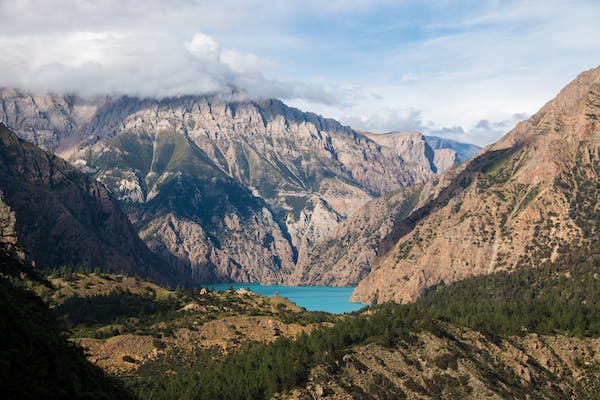Location: Nepal
Elevation: 7 246 meters
About PuthaHiunchuli
If you are looking for a climbing spot without much technical difficulty and avalanche dangers, Mount PuthaHiunchuli in Nepal is the best, and add this on your bucket list if you are looking for extra adrenaline rush adventure by skiing down on the mountain’s good slope.
PuthaHiunchuli with 7 246 meter elevation is part of the Dhaulagiri Range; that is why it is also known as Mt. Dhaulagiri VII located at the westernmost peak of the range. The mountain was first summited by a legendary explorer and climber J. O. M. Roberts and AngNyima Sherpa in 1954.
Thousands of tourists throng most parts of Nepal, but Mount PuthaHiunchuli is not that famous, and the region is not that known to many people, which makes it good to be explored. A walk through high cliffs, deep canyons, and breath-taking valleys are enchanting and mesmerizing as you approach the mountain.
If you plan to climb the mountain, prepare for the roped-up glacier climbing with crevasses crossings, and the snow slopes are up to 40 degrees.
When is the best time for the climb
The entire climb can last over a month up to 38 days generally, so make sure you visit the mountain when the conditions are at its best, so you have an enjoyable expedition. A lot of resources will tell you that it is an easy climb; nevertheless, do not underestimate it as it is still a 7000 meter plus elevation.
Spring and autumn
The Spring season in Nepal attracts a large number of tourists. The season continues from March to May, and March to April is considered the second-best season for trekking, next best to October to November.
Autumn in Nepal lasts from September to November, making the best time to visit Nepal, as the surroundings get clear by summer monsoons. During this season, the weather remains pleasant, not much affected by the cold.
Also, climbing PuthaHiunchuli requires a high level of physical fitness as it involves endurance climb at very high altitudes and extremely low temperatures. Temperatures on summit day could be as low as -40 degrees Celsius.
Travel Necessities
Duffel Bags
Just bring a duffel on your trek to the Base Camp, and you will need a second duffel for your equipment, which will go directly to BC. These will be carried by porters or by yaks. Make sure they are waterproof, sturdy, and has a name in case the tag is lost.
Wheeled bags are not good for neither porters nor yaks, so don’t use them. Smaller, handy bags with locks are also helpful as you will also store some travel clothes at the hotel in Kathmandu while trekking.
Tip: Bring large plastic garbage bags to pack gear inside duffels to protect equipment from the rain.
Daypack
Large bag or daypack with a shoulder strap, so you don’t have to set it down while doing the duffle shuffle or handling travel documents while passing passport control and customs. It has to be big enough to hold everything you’ll need for an overnight stop.
Travel Wallet
It is necessary to have a travel wallet big enough for storing important documents, including passport, extra photos, duffel inventory list, and money. It is better to hang it around your neck and place inside your shirt, or your waist tucked under your shirt or trousers.
Important trekking equipment
Ice ax
Choose an ice ax appropriate on your height and the climb you anticipate. A general-purpose ax in the 60-70 cm range. Losing an ax will be a trouble and a big problem, so better if it has a wrist leash useful for wearing while crossing snow bridges or on steep slopes. Also, preferably a spike with a point to a tubular shape that can glance off the ice at certain angles.
Crampons
Crampons need to stay on your boots no matter what, so ensure that your boots are compatible with your crampons. Do not use “cookie-cutter” crampons with a vertical side rail as they tend to ball up in soft snow. Instead, mono points, heel hooks, and various technical ice paraphernalia may be great for an icicle but are unnecessary for mountaineering.
- Helmet
- Bowl, Cup, Spoon, Pocketknife for up high
- Climbing Harness
Preferably, a harness with a minimum of padding that can be adjusted is good to fit over bulky clothing with leg loops that open up, so you don’t have to step into the harness.
Ascenders & Hardware
Large locking carabiners, mechanical ascenders with slings, rappel device, extra shoulder slings with ‘biners. Also, secure a 30 feet of 8mm accessory cord or ½ inch tape webbing to rig your ascender and safety sling.

